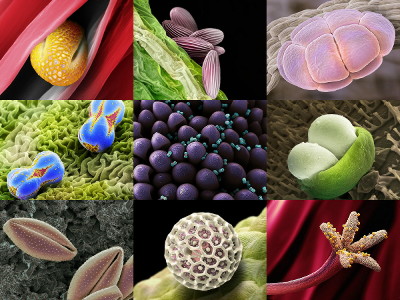Elucidation of the mechanism by which the 'fractal structure' peculiar to cauliflower is created

It is well known that cauliflower and
Cauliflower fractal forms arise from perturbations of floral gene networks | Science
https://science.sciencemag.org/content/373/6551/192
Why do cauliflowers look so odd? We've cracked the maths behind their'fractal' shape
https://theconversation.com/why-do-cauliflowers-look-so-odd-weve-cracked-the-maths-behind-their-fractal-shape-164121
Fractal is a concept called 'self-similarity ', which is a structure in which geometric patterns are repeated many times at different magnifications. A specific example is often the Romanesco bud. Each bud of Romanesco is conical and is arranged in a spiral to form a large conical. The characteristic of Romanesco buds is that the large cones form even larger cones, and so on, repeating the cones while drawing a regular spiral.
The picture below is a bud of Romanesco. The self-similarity that large cones are made by repeating small cones is clearly shown.

Romanesco has a particularly noticeable fractal structure, but cauliflower also has a fractal structure similar to Romanesco. It is also known that the
For example, if you count the rows of cauliflower spirals in the photo below, there are 5 rows clockwise (left photo) and 8 rows counterclockwise (right photo). These '5' and '8' are numbers called Fibonacci numbers. There are many examples in the natural world where Fibonacci numbers are found in spiral structures, such as sunflower seeds and pine cones.

It was unclear why cauliflower had a fractal structure, but the same cruciferous
In cruciferous plants, inflorescences are first formed when flowers bloom, and flower buds are formed from them. If there is an abnormality in the gene required for the shoot apical meristem at the tip of this inflorescence to differentiate into a flower bud, another inflorescence will be formed at the tip of the inflorescence, and another inflorescence will be formed at the tip of the inflorescence. It was found that inflorescences were repeatedly formed, resulting in a cauliflower-like fractal structure. The image below is a photograph of Arabidopsis thaliana with a cauliflower-like tissue formed at the tip of a branch due to mutation.

by BlueRidgeKitties
In order to elucidate how cauliflower grows, the CNRS research team will compare 'the mechanism of fractal structure formation found in large cauliflower' with 'the basic genetic network found in white inunazuna' and concretely. I studied which genes are associated with the structure of cauliflower. We also mathematically modeled the gene network using differential equations to predict behavior during expression.
Research has shown that four major genes play important roles in the formation of the cauliflower helical structure. The acronyms for the four genes are S, A, L, and T, respectively, and Etienne Farcot, an assistant professor of mathematics at the University of Nottingham, who is a member of the research team, said, 'The acronyms for the discovered genes are clearly jokes.' It states.
Of these four genes, 'A' was the gene that was missing when Arabidopsis became cauliflower-like. Cauliflower does not have this 'A' gene, so even if the tip tissue tries to become a flower, it will continue to fail. In other words, cauliflower produces a fractal structure by almost the same genetic mechanism as Arabidopsis thaliana, and the white cauliflower seen in supermarkets is 'a result of endless failure in flower formation due to gene mutation'. Also, in the case of Romanesco, unlike other cauliflowers, the speed at which buds sprout from the stem accelerates, so it was found that that unique shape is created.
In addition to genetic experiments, the research team also combined 3D computational modeling of plant development using mathematical models to simulate the formation of cauliflower and Romanesco buds. Then, the fractal structure peculiar to cauliflower was accurately reproduced on the computer.
'The results reveal how cauliflower fractal structures are generated through growth and developmental genetic networks that alter identity and meristem dynamics,' the research team said. The model reveals the molecular and morphological changes over time that form the highly diverse and attractive plant structures found in nature and crops. '
Related Posts:







